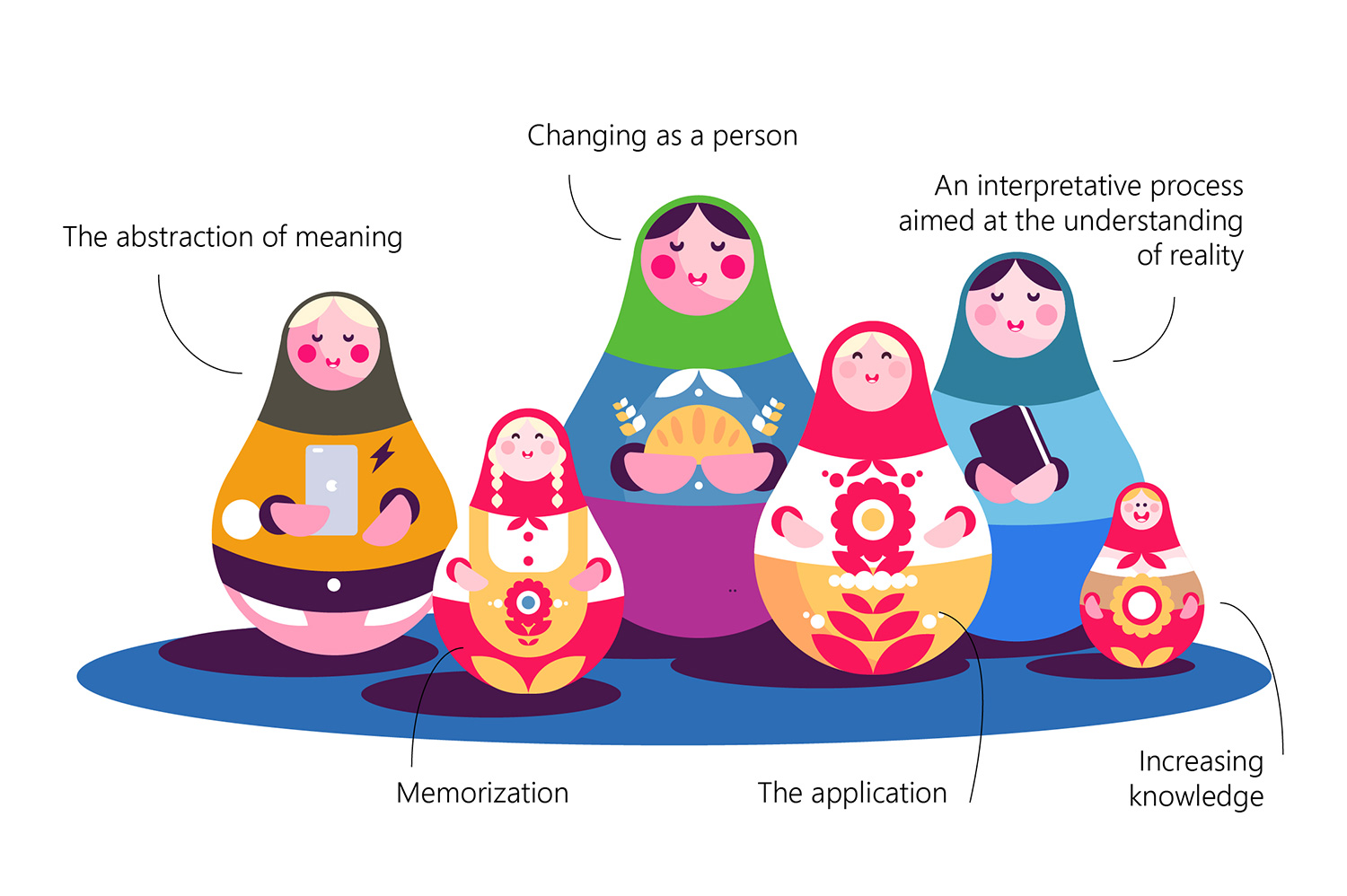What does “learning” mean to you? Chances are your answer will differ from that of your neighbour. Indeed, contrary to what one might think, we do not all share the same conception of the learning process. Among those who have studied the issue, researcher Roger Säljö, who, with Ference Marton, is at the origin of the concepts of surface and in-depth learning, is the first to have identified different conceptions of learning among adult students. Marton and other colleagues uncovered another one a few years later. Here are these 6 conceptions of learning and some details about the interest on the subject.
Discovery in two stages
The first five conceptions of learning emerged from a survey in which Säljö (1979) interviewed a group of mature students about what learning meant to them. The sixth emerged from a six-year longitudinal study by Marton, Dall’Alba and Beaty (1993), also conducted with adult students. The latter also revealed a correlation between a learner’s perception of learning and the approach — on the surface or in depth — that he or she is likely to adopt towards his or her studies.
More specifically, a learner whose learning conception corresponds to one of the first three is more likely to choose a surface approach, whereas if his or her learning conception corresponds to one of the last three, he or she is more likely to perform a learning task with an in-depth approach. Several subsequent studies have also found this to be the case (Van Rossum and Schenk, 1984; Marton and Säljo, 1997; Rosário, 1999). The good news is that the learners would be able to improve their learning process by changing the way they perceive the task at hand (Marton, Hounsell and Entwistle, 1997).
The six conceptions of the learning process
- Increasing knowledge
Increase the amount of information that constitutes our knowledge base.
- Memorization
Record information repeatedly to remind us of it if necessary.
- The application
Acquire facts, methods, etc. that can be retained and/or used in practice if necessary.
- The abstraction of meaning
Seek to understand the hidden meaning of things.
- An interpretative process aimed at the understanding of reality
Approach a concept from different perspectives.
- Changing as a person
Develop or change as an individual as a result of new understandings or appreciations, see the world differently.
*Concepts from 1 to 5 were identified by Säljö (1979), and 6th by Marton, Dall’Alba and Beaty (1993).
The decoded diagram
Two categories. By referring to the notions of surface and in-depth learning, discussed in a previous article, the six conceptions can be classified into two categories. In conceptions 1 to 3, where learning rhymes with the idea of “recording”, accumulating and reproducing information, knowledge is portrayed as being external to the learner, which corresponds to so-called “surface” learning. Concepts 4 to 6, where the learner seeks to make sense of information and transform it, portray knowledge as an internal process (Entwistle, 1998a, 1998b, 1990) driven by an intention to learn and understand, which refers to “in-depth” learning.
From the most evolved to the least evolved. The six conceptions of learning can be said to be part of a developmental hierarchy that runs in increasing order from the first to the sixth. Since we are talking about adult learners, we must understand the term “developmental” in the sense of “epistemological growth”. Thus, the first conception corresponds to the lowest developmental stage and the sixth to the most important, while the latter “adds an existential aspect to learning to the extent that learning is seen as leading to a different vision of the world” (Rosário and al. 2007).
All in each other, like Russian dolls. These concepts, as presented in the diagram, also form an interlocking hierarchy. Thus, the sixth conception includes the previous five, the fifth includes the previous four, and so on. On the other hand, since the developmental hierarchy is in increasing order, the opposite is not true. It is therefore unlikely that a learner whose conception corresponds, for example, to the third one, will see learning as an internal change leading him or her to see the world differently.
Other sources
« Voix d’élèves sur l’apprentissage à l’entrée et à la sortie de l’université : un regard phénoménographique » (Rosário et al. 2007) – Érudit
Recherche comparative en éducation(2010), dir.B. Adamson, M. Bray et M. Mason – deboeck supérieur
Paper 3: Students’ Conceptions of Learning– Institute for the Advancement of University learning – University of Oxford






